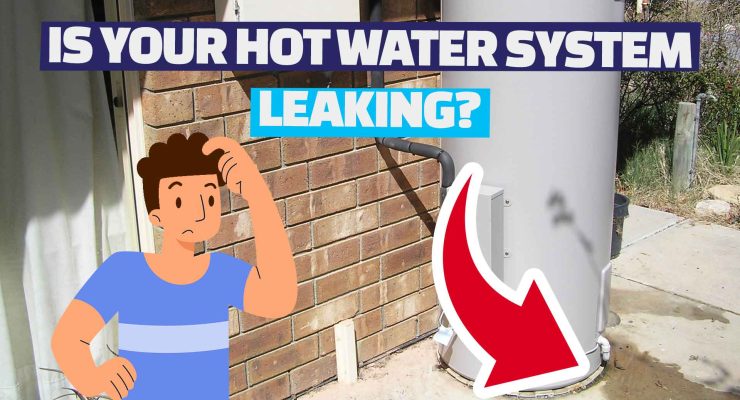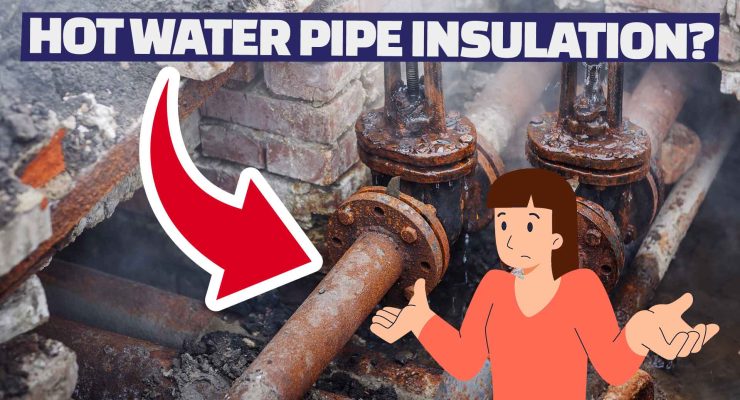Fast read
A leaking hot water system often signals a larger issue. Common leak sources include the top of the tank (cold water pipe or anode rod), the bottom of the tank (sediment buildup or corrosion), and the pressure relief valve. Immediate steps include turning off the water supply and power to the system, and draining the tank if necessary.
Regular maintenance, such as annual inspections, flushing the tank, and replacing the anode rod, can prevent future leaks. If you notice a leak, contact a professional promptly to avoid more significant problems and potential system replacement.
Why Is My Hot Water System Leaking?
If you’ve ever found yourself asking, “Why is my hot water system leaking?”, you’re not alone. This common household issue can be a significant cause for concern, primarily because a leaking hot water system often indicates a more severe underlying problem.
A hot water system can last up to seven years with proper maintenance. But if you ignore a leak, it can cause expensive repairs or replacements and shorten the system’s lifespan.
This article will help you find and fix a leak in your hot water system so it can keep working well.
Identifying the Source of the Leak
The first and most crucial step when dealing with a leaking hot water system is to locate the source of the leak. This can be challenging without a trained eye, but there are some common areas where leaks typically occur.
- Top of the Tank: Leaks from the top of the tank often occur because of issues with the cold water inlet pipe or a faulty anode rod. These components can deteriorate over time, leading to water seepage. If you suspect a leak from the top, it’s advisable to contact a professional for a thorough inspection.
- Bottom of the Tank: A leak from the bottom of the tank is usually more severe, often indicating sediment buildup or internal tank corrosion. This type of leak typically means the tank itself may need to be replaced. Sediment accumulation can lead to overheating and tank failure, so it’s essential to address this issue promptly.
- Pressure Relief Valve: The pressure relief valve is designed to release excess pressure from the tank. While occasional dripping is normal, a constant leak indicates that the valve may be faulty and needs replacement. Again, a professional evaluation is recommended to determine the best course of action.
- Pipe Connections: Leaks can also occur at the connections between the tank and the water pipes. These might be because of loose fittings or deteriorated seals, which can often be fixed by tightening or replacing the affected parts.
Immediate Steps to Take
Once you’ve identified where the leak is coming from, there are immediate steps you should take to prevent further damage:
- Turn Off the Water Supply: Locate the valve that supplies water to your hot water system. This is typically found near the bottom of the tank. Turning this valve to the off position will stop the flow rate of water into the system, preventing the leak from worsening. If you’re unable to find this valve, turning off the main water supply to your house is a suitable alternative.
- Turn Off the Power Supply: For electric hot water systems, switch off the circuit breaker that powers the system. For gas hot water systems, locate the gas isolation valve and turn it off. This step is crucial to prevent any risk of electrical hazards or gas leaks while you address the water leak.
- Drain the Hot Water Tank: If the leak is severe, draining the tank can help manage the situation until a professional arrives. Connect a hose to the drain valve at the bottom of the tank and direct the water to a safe drainage location. Be cautious as the water may be hot.

When to Call a Professional
While some minor issues might be manageable on your own, most hot water system leaks require professional intervention. A licensed plumber can identify the problem and recommend the best solution. This could involve repairing a specific part or replacing the entire system.
Preventive Measures to Avoid Future Leaks
To extend the lifespan of your hot water system and prevent future leaks, consider the following maintenance tips:
- Regular Inspections: Have your hot water system inspected annually by a professional. Regular maintenance can catch potential issues early before they become major problems.
- Flush the Tank: Sediment buildup is a common cause of leaks and inefficiency in hot water systems. Flushing the tank periodically helps remove sediment, maintaining the system’s efficiency and prolonging its lifespan.
- Replace the Anode Rod: The anode rod is designed to attract corrosive elements and protect the tank from rusting. Replacing this rod every few years can significantly extend the life of your hot water system.
- Check the Pressure Relief Valve: Regularly test the pressure relief valve to ensure it’s functioning correctly. If it’s not releasing pressure as it should, replace it promptly to avoid potential tank damage.
Upgrading Your Hot Water System
If your hot water system is old or frequently experiencing issues, it might be time to consider an upgrade. Modern hot water systems are more energy-efficient and reliable, offering long-term savings on your water bills. When replacing your system, consider factors like capacity, energy source (gas, electric, solar), and additional features such as timers and temperature controls.
Conclusion
A leaking hot water system is not just a nuisance; it’s a sign that something is wrong and needs immediate attention. Find where the leak is coming from, stop it, and get help from a professional to fix it. This will keep your home safe and make sure you have hot water. Regular maintenance and timely upgrades can also help you avoid future leaks, providing peace of mind and efficient hot water for years to come.
Remember, addressing a leak promptly can save you time, money, and frustration in the long run. If you notice your hot water system leaking, don’t wait – act today to keep your home safe and comfortable.



